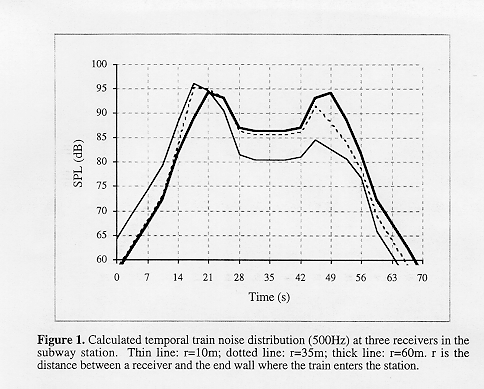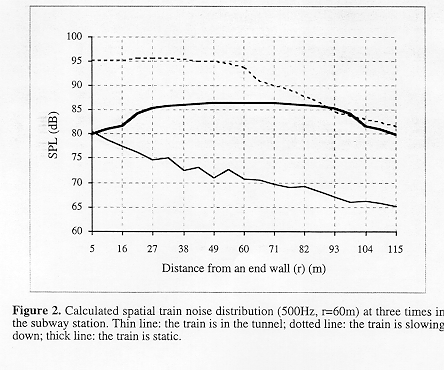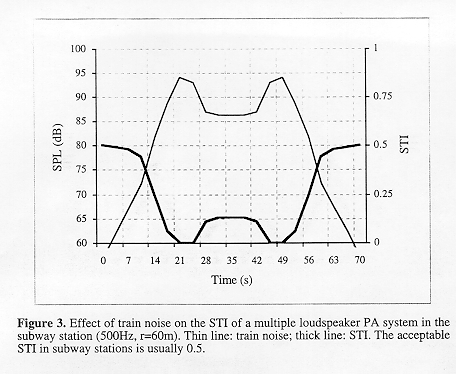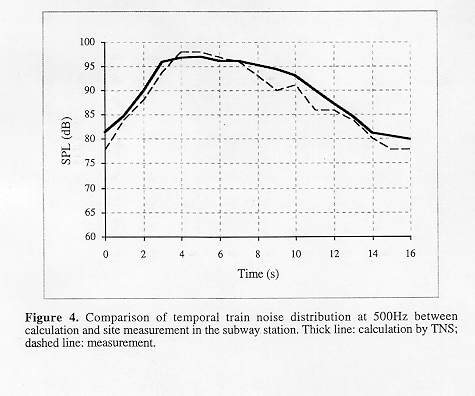Jian Kang - jk10021@hermes.cam.ac.uk
The Martin Centre
University of Cambridge
6 Chaucer Road
Cambridge CB2 2EB
UK
Popular Version of Paper 1pNSa6
Presented Monday afternoon, December 2, 1996
3rd Joint ASA/ASJ Meeting, Honolulu, Hawaii
Embargoed until December 2, 1996
Subway stations are typically long enclosures, where classical room acoustic theory is inappropriate [1-3]. In this research, TNS, a computer model for predicting the temporal and spatial distribution of train noise in subway stations has been developed [4]. The train is regarded as a series of sections, and the train noise distribution in a station is calculated by inputting the sound attenuation from a train section source in the subway system (i.e., the station and tunnel). This input can be obtained by physical scale modelling.
Figures 1 to 3 show typical calculations by TNS in a subway station in London (St. John's Wood). The station is of a circular cross-section. Its diameter and length are 6.5m and 128m, respectively. The prediction for this station shows good agreement with site measurements, as illustrated in Figure 4.




A series of computations in the station demonstrates that: (1) the overall level of the train noise in the area near the end walls is slightly less than in the other areas; (2) some conventional architectural acoustic treatments in the station, such as suspended absorbers on the ceiling, are effective when a train is still in the tunnel but not as helpful when the train is already in the station; and (3) train noise has a significant effect on the intelligibility of station public address (PA) systems - typically decreasing the speech transmission index (STI) to below the acceptable value, 0.5.
It is expected that TNS will be useful for considering the STI of station PA systems as a dynamic process rather than a single value, and for investigating possible treatments for train noise reduction.
References
1. Kang, J. Reverberation in rectangular long enclosures with geometrically reflecting boundaries. Acustica/acta acustica 82 (1996), 509-516.
2. Kang, J. Acoustics in long enclosures with multiple sources. J. Acoust. Soc. Am. 99 (1996), 985-989.
3. Kang, J. Improvement of the STI of multiple loudspeakers in long enclosures by architectural treatments. Appl. Acoust. 47 (1996), 129-148.
4. Kang, J. Modelling of train noise in underground stations. J. Sound Vib. 195 (1996), 241-255.